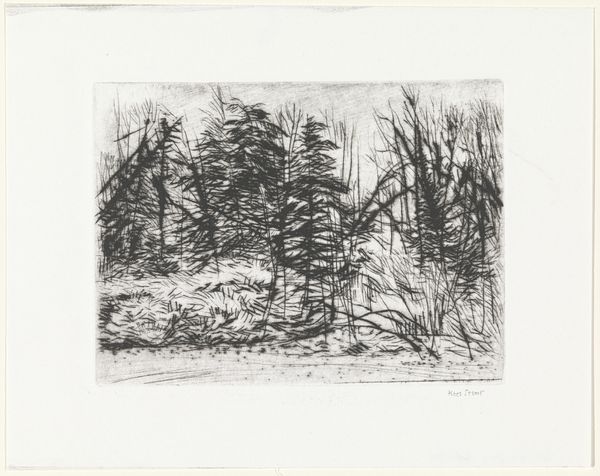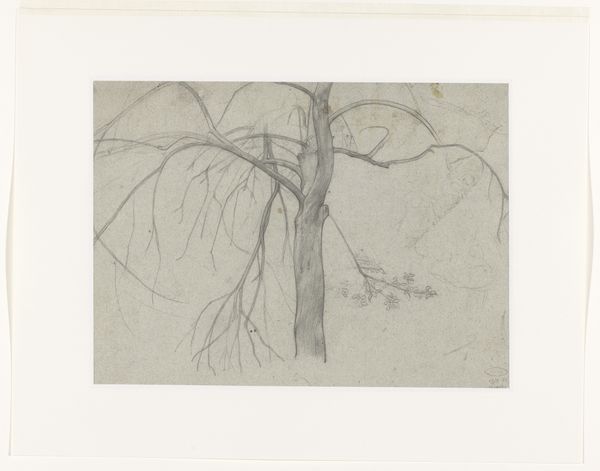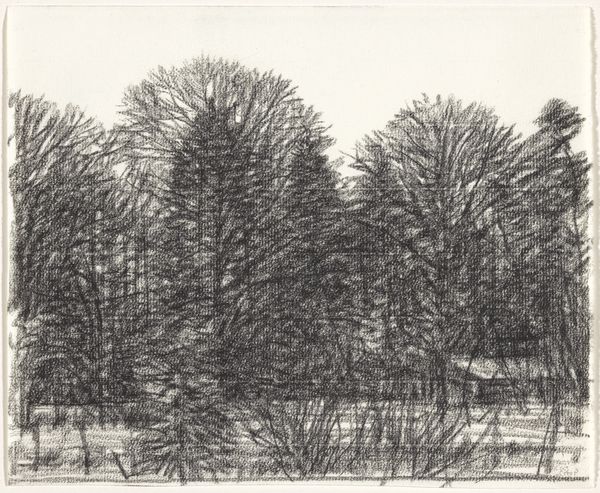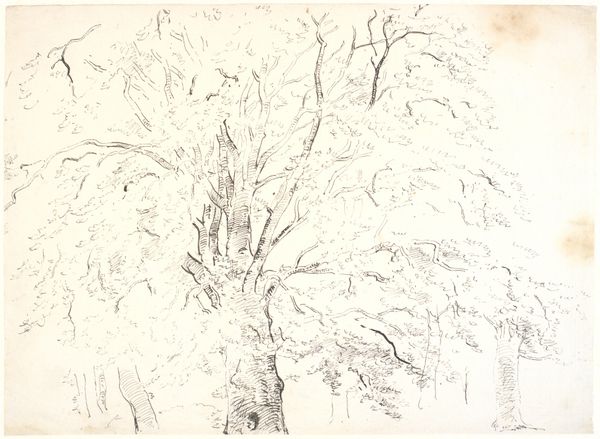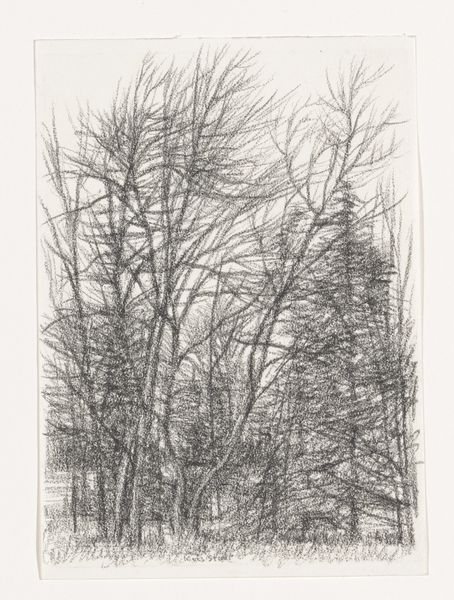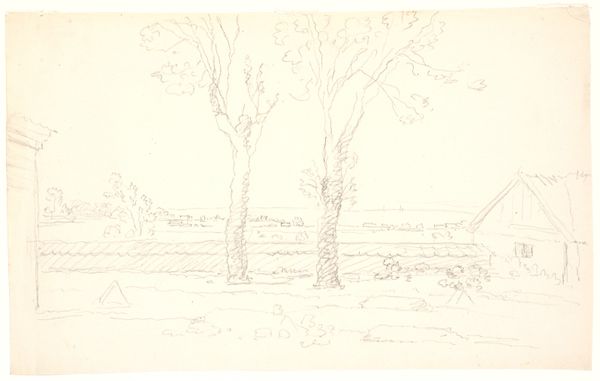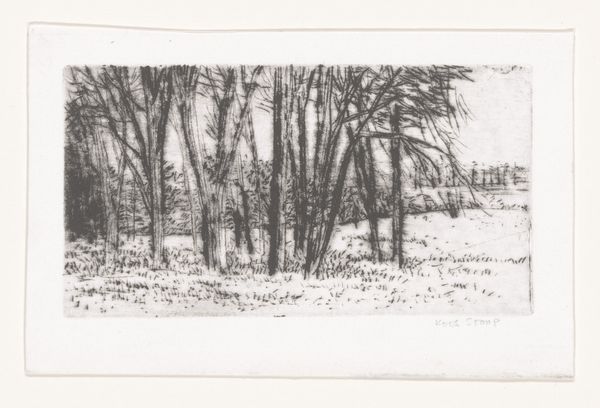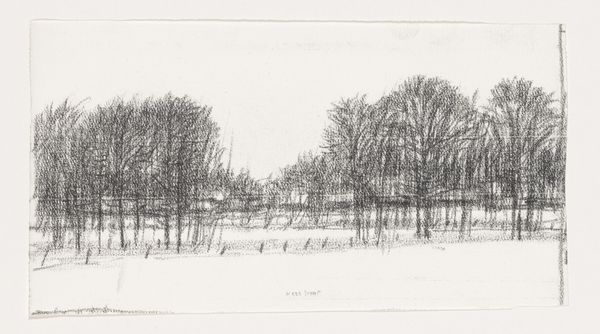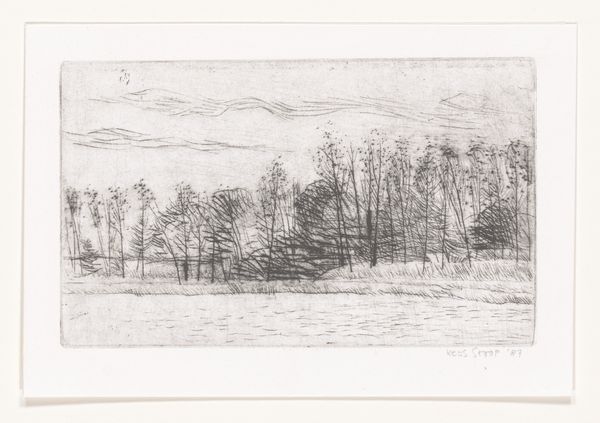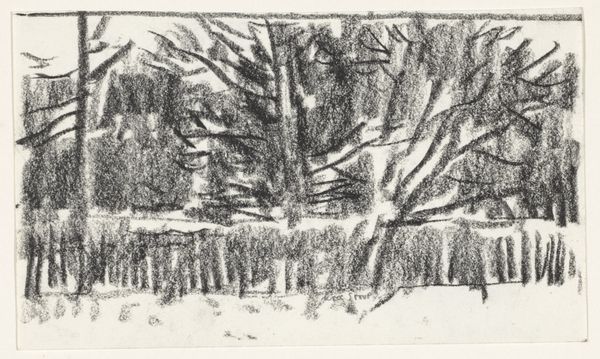
drawing, print, etching
#
drawing
# print
#
etching
#
landscape
#
etching
#
figuration
Dimensions: height 213 mm, width 213 mm, height 148 mm, width 148 mm
Copyright: Rijks Museum: Open Domain
Editor: This etching, "Bomen en gezicht" by Kees Stoop, created sometime between 1944 and 1990, presents a delicate scene of trees. What strikes me is how ghostly and almost unsettling the face in the background seems against the landscape. What do you make of the juxtaposition? Curator: I see it as a powerful commentary on the relationship between humanity and nature, especially when viewed through the lens of the mid-to-late 20th century. Think about the ecological anxieties that began to surface during that period. Does this partially obscured face suggest humanity’s looming, perhaps destructive, presence within a vulnerable environment? Editor: That’s a really interesting perspective. I was just thinking of it more as a dreamlike, surreal element. The period is so broad and ill-defined, which impacts its meaning, I think. Curator: Exactly, and the work’s ambiguity invites these layered interpretations. Consider Stoop's personal context, the societal anxieties regarding rapid industrialization, urbanization and the looming shadows of conflict, especially considering the dates during and after WWII. This is not just a neutral depiction of nature. Editor: So you’re suggesting the ‘face’ could represent the artist, society, or even an anthropomorphized environment pushed to the edge? Curator: Precisely! Or perhaps all of those simultaneously, reflecting the intricate web of accountability that connects individual agency to collective environmental impact, laid bare for the audience's observation. Does that framing change how you perceive the 'ghostly' quality? Editor: Absolutely. I initially saw a disquieting image, but now I also see a critique embedded within it – almost like a warning. Curator: I think it showcases art's capacity to embed societal criticism even in the quietest of landscapes, so well revealed in this piece through his mastery with line and form. I find that powerful, do you? Editor: I do too! It’s fascinating to consider art from that intersectional perspective. Thanks for opening my eyes to that.
Comments
No comments
Be the first to comment and join the conversation on the ultimate creative platform.
